by Bruce Wells | Feb 3, 2025 | Energy Education Resources
Growing oil demand challenged petroleum geologists, who organized a professional association.
As demand for petroleum grew during World War I, the science for finding oil and natural gas reserves remained obscure when a small group of geologists in 1917 organized what became the American Association of Petroleum Geologists (AAPG).
AAPG began as the Southwestern Association of Petroleum Geologists in Tulsa, Oklahoma, after about 90 geologists gathered at Henry Kendall College, now Tulsa University. They formed an association of earth scientists on February 10, 1917, “to which only reputable and recognized petroleum geologists are admitted.”

AAPG members maintain a professional business code.
Rapidly multiplying mechanized technologies of the “Great War” brought desperation to finding and producing vast supplies of oil. America entered the First War I two months after AAPG’s founding. An October 1917 giant oilfield discovery at Ranger, Texas, inspired a British War Cabinet member to declare, “The Allied cause floated to victory upon a wave of oil.”
Rock Hounds
In January 1918, the AAPG convention of in Oklahoma City reported 167 active members and 17 associate members. After adopting its present name one year after organizing at Henry Kendall College, the group issued its first technical bulletin, using papers and presentations delivered at the 1917 Tulsa meeting.
The professional “rock hounds” produced a mission statement that included promoting the science of geology, especially relating to oil and natural gas. The geologists also committed to encouraging “technology improvements in the methods of exploring for and exploiting these substances.”
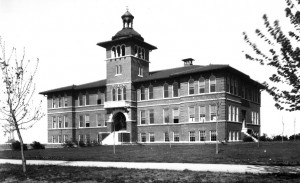
AAPG was founded in Tulsa, Oklahoma, at Henry Kendall College — today’s Tulsa University.
AAPG also began publishing a bimonthly journal that remains among the most respected in the industry. The peer-reviewed Bulletin included papers written by leading geologists of the day.
With a subscription price of five dollars, the journal was distributed to members, university libraries, and other industry professionals.
Finding Faults and Anticlines
By 1920, one petroleum trade magazine — after complaining of the industry’s lack of skilled geologists — noted the “Association Grows in Membership and Influence; Combats the Fakers.”
The article praised AAPG professionalism and warned of “the large number of unscrupulous and inadequately prepared men who are attempting to do geological work.”
Similarly, the Oil Trade Journal praised AAPG for its commitment “to censor the great mass of inadequately prepared and sometimes unscrupulous reports on geological problems, which are wholly misleading to the industry.”

Perhaps the best known such fabrication is related to the men behind the 1930 East Texas oilfield discovery — a report entitled “Geological, Topographical And Petroliferous Survey, Portion of Rusk County, Texas, Made for C.M. Joiner by A.D. Lloyd, Geologist And Petroleum Engineer.”
Using very scientific terminology, A.D. Lloyd’s document described Rusk County geology — its anticlines, faults, and a salt dome — all features associated with substantial oil deposits…and all completely fictitious.
The fabrications nevertheless attracted investors, allowing Joiner and “Doc” Lloyd to drill a well that uncovered a massive oil field, still the largest conventional oil reservoir in the lower-48 states.
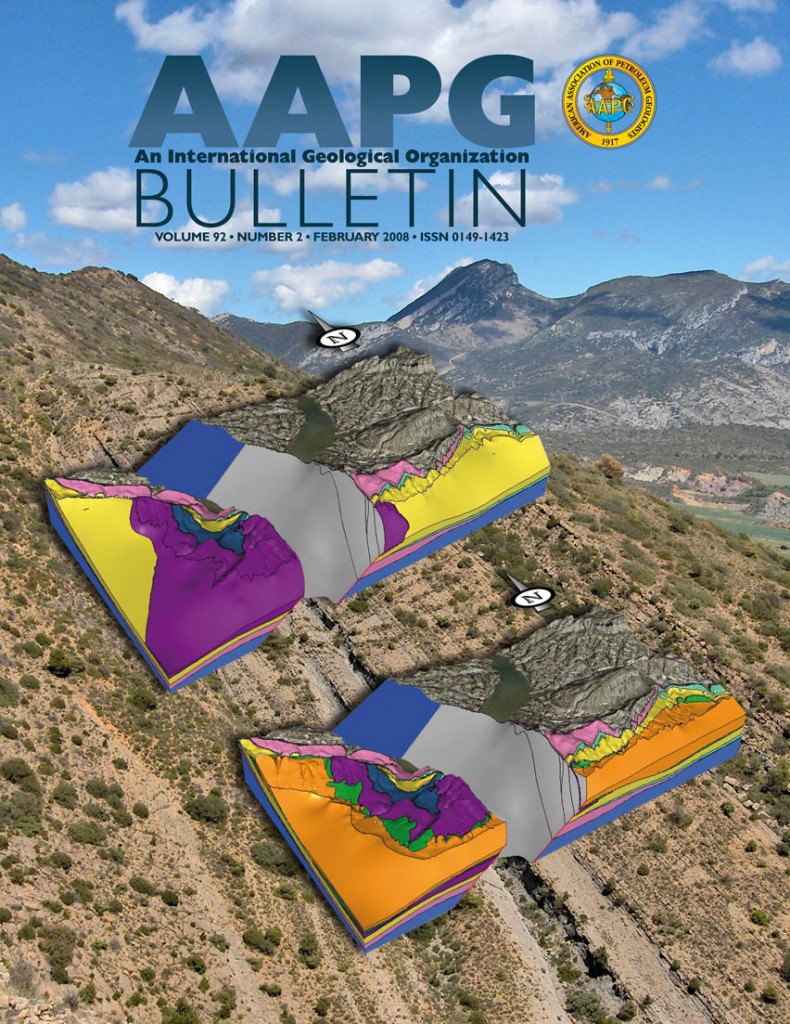
AAPG’s peer-reviewed journal first appeared in 1918, one year after the association’s first meeting in Tulsa.
Equally imaginative science came from Lloyd’s earlier descriptions of the “Yegua and Cook Mountain” formations and the thousands of seismographic registrations he ostensibly recorded. Lloyd, a former patent medicine salesman, and other self-proclaimed geologists, were the antithesis of the AAPG professional ethic.
In 1945, AAPG formed a “Committee on Boy Scout Literature” to assist the Boy Scouts of America in updating requirements for the “mining” badge, which had been awarded since 1911 (learn more in Merit Badge for Geology).

By 1953, AAPG membership had grown to more than 10,000 and a permanent headquarters building opened Tulsa. The association’s 2022 membership included about 40,000 members in 129 countries in the upstream energy industry, “who collaborate — and compete — to provide the means for humankind to thrive.”
The world’s largest professional geological society, a nonprofit organization, maintains a membership code to assure “integrity, business ethics, personal honor, and professional conduct.”
Oil Patch Historians
Longtime AAPG member Ray Sorenson, a Tulsa-based consulting geologist, has made numerous presentations about the history of petroleum. After publishing papers in leading academic journals, he adapted many of his contributions for the association’s 2007 Discovery Series, “First Impressions: Petroleum Geology at the Dawn of the North American Oil Industry.”
Further, Sorenson continued to research and collect a vast amount of material documenting the earliest signs of oil — worldwide references to hydrocarbons earlier that the 1859 first U.S. oil well drilled by Edwin Drake in Pennsylvania.

Drake expert and geologist and historian William Brice, professor emeritus at the University of Pittsburgh at Johnstown, in 2009 published Myth, Legend, Reality – Edwin Laurentine Drake and the Early Oil Industry. His 661-page epic was researched and written as part of the U.S. petroleum industry’s 150th anniversary (learn more in Edwin Drake and his Oil Well),
As part if AAPG’s 2017 centennial events, geologist Robbie Rice Gries published Anomalies: Pioneering Women in Petroleum Geology 1917-2017. Researched with help from AAPG volunteers, her 405-page book includes contributors’ personal stories, written correspondence, and photographs dating back to the early 1900s.
The stories in Gries’ book should be read by every petroleum geologist, geophysicist and petroleum engineer, according to independent producer Marlan Downey, founder of Roxanna Oil Company. “Partly for the pleasure of the sprightly told adventures, partly for a sense of history, and, significantly, because it engenders a proper respect towards all women professionals, forging their unique way in a ‘man’s world.’”
_______________________
Recommended Reading: Anomalies: Pioneering Women in Petroleum Geology 1917-2017 (2017); Trek of the Oil Finders: A History of Exploration for Petroleum (1975); Myth, Legend, Reality – Edwin Laurentine Drake and the Early Oil Industry (2009); The Prize: The Epic Quest for Oil, Money & Power (1991); The Birth of the Oil Industry (1936). Your Amazon purchase benefits the American Oil & Gas Historical Society. As an Amazon Associate, AOGHS earns a commission from qualifying purchases.
(2009); The Prize: The Epic Quest for Oil, Money & Power (1991); The Birth of the Oil Industry (1936). Your Amazon purchase benefits the American Oil & Gas Historical Society. As an Amazon Associate, AOGHS earns a commission from qualifying purchases.
_______________________
The American Oil & Gas Historical Society preserves U.S. petroleum history. Please become an AOGHS annual supporter and help maintain this energy education website and expand historical research. For more information, contact bawells@aoghs.org. Copyright © 2025 Bruce A. Wells. All rights reserved.
Citation Information – Article Title: “AAPG – Geology Pros since 1917.” Authors: B.A. Wells and K.L. Wells. Website Name: American Oil & Gas Historical Society. URL:https://aoghs.org/energy-education-resources/aapg-geology-pros-since-1917. Last Updated: February 4, 2025. Original Published Date: April 29, 2014.
by Bruce Wells | Aug 25, 2022 | Petroleum Technology
Petroleum pioneers who took earth science to a deeper level.
When oil burst onto the U.S. marketplace as a commercial opportunity for refining into kerosene lamp fuel, the art and science of petroleum geology was born.
The coal-mining industry had long provided employment for geologists and the oil boom presented a new kind of mineral wealth for America and a new challenge for geologists. But Pennsylvania’s first oil exploration ventures soon found that hiring geologists didn’t significantly improve their chances of success in an already risky business.
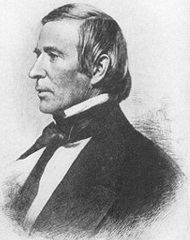
Henry D. Rogers, (1808 – 1866) was one of the first professional U.S. geologists.
Decades before the Civil War, the pursuit and mining of coal prompted many geological surveys, studies, and assessments of potential mineral resources. Railroads stretching westward needed good quality coal supplies and routes always considered the availability of nearby sources.
Oil Seeps and Salt Wells
Searching for high-quality bituminous coal in America, many early geologists had reported oil seeps and the associated landforms, but mostly as a curiosity and in relation to their proximity to coal beds. In Kentucky, Ohio, and the western part of what is now West Virginia, the salt business also gave important insights into formations called “structural traps.”
Drilling commercial brine wells and salt manufacturing was a lucrative industry. Geologists’ surveys found that strata of sedimentary rock fractured, faulted, and folded, sometimes producing salt domes and brine deposits.
Geologists also noted that oil and natural gas was occasionally trapped in porous deposits sandwiched between impermeable rock layers. Such contamination fouled commercial brine wells and was an unwelcome intrusion, but cottage industry entrepreneurs skimmed it off and sold it for patent medicine, lubrication, and other novel purposes.
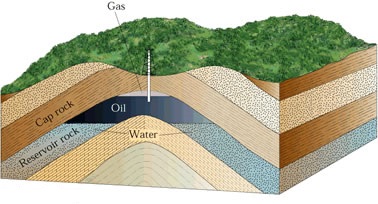
In Kentucky, Ohio and West Virginia, geologists studied landforms associated with salt brine and coal “structural traps.” These anticlinal traps held oil and natural gas because the earth had been bent, deformed or fractured. Unsuccessfully applying structural trap theories to Pennsylvania’s differing geology undermined early petroleum geologists’ credibility.
A pioneering Ohio physician and natural scientist named Samuel Hildreth examined and recorded details of the salt business in southeastern Ohio, noting structural traps as a geologic feature associated with brine, coal, and oil.
In 1836, Hildreth published his extensive “Observations on the Bituminous Coal Deposit for the Valley of the Ohio, and the Accompanying Rock Strata.” It was America’s first petroleum geology primer.
Hildreth was a strong advocate for Ohio’s first geological survey and later served as the state geologist. His observations of the structural trapping of petroleum were later affirmed by Pennsylvania’s state geologist, Henry D. Rogers, who erroneously declared that Pennsylvania’s oilfields were likewise based on structural trapping of petroleum in anticline formations.

Pennsylvania’s oilfields were in fact found predominantly in another kind of formation altogether, the “sandstone stratigraphic trap,” but Rogers’ prestigious endorsement, circulated widely in an 1863 Harper’s Magazine article, convinced geologists to the contrary.
The search for oil prompted the first petroleum geologists to impose Hildreth and Rogers’ structural trapping theory on Pennsylvania’s differing geology. It didn’t work and their failures in Pennsylvania hindered the acceptance of petroleum geologists for decades.
Although structural trapping remains a dominant characteristic for many of America’s most prolific oil and natural gas fields, ironically it wasn’t so in Pennsylvania’s Oil Creek region, where the petroleum industry was born. As noted by author and geologist Ray Sorenson, “theories of trapping did not work in the absence of anticlines.”
Sorenson, who has researched first documented reports of oil worldwide (see Earliest Signs of Oil), also reported the science of petroleum geology took some time to develop — and be accepted.
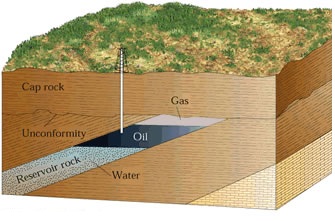
The dominant oil bearing feature in Pennsylvania’s oil region is a sedimentary geologic formation known as a “stratigraphic trap” and differs significantly from a structural trap. It is formed in place by erosion, usually in porous sandstone enclosed in shale. The impermeable shale keeps the oil and gas from escaping.
It took until the turn of the century before successful geologically driven discoveries in the Mid-Continent and Gulf regions encouraged exploration companies to use petroleum geologists.
Although the science of geology had revealed the 34-square-mile El Dorado oilfield in central Kansas in 1915, many companies still had little confidence in geologists.
James C. Donnell, president of the Ohio Oil Company (later Marathon Oil) proclaimed, “The day The Ohio has to rely on geologists, I’ll get into another line of work.”
But after the company’s first geologist, C.J. “Charlie” Hares found 19 oil and natural gas fields, Donnell changed his mind and declared Hares to be “the greatest geologist in the world.”
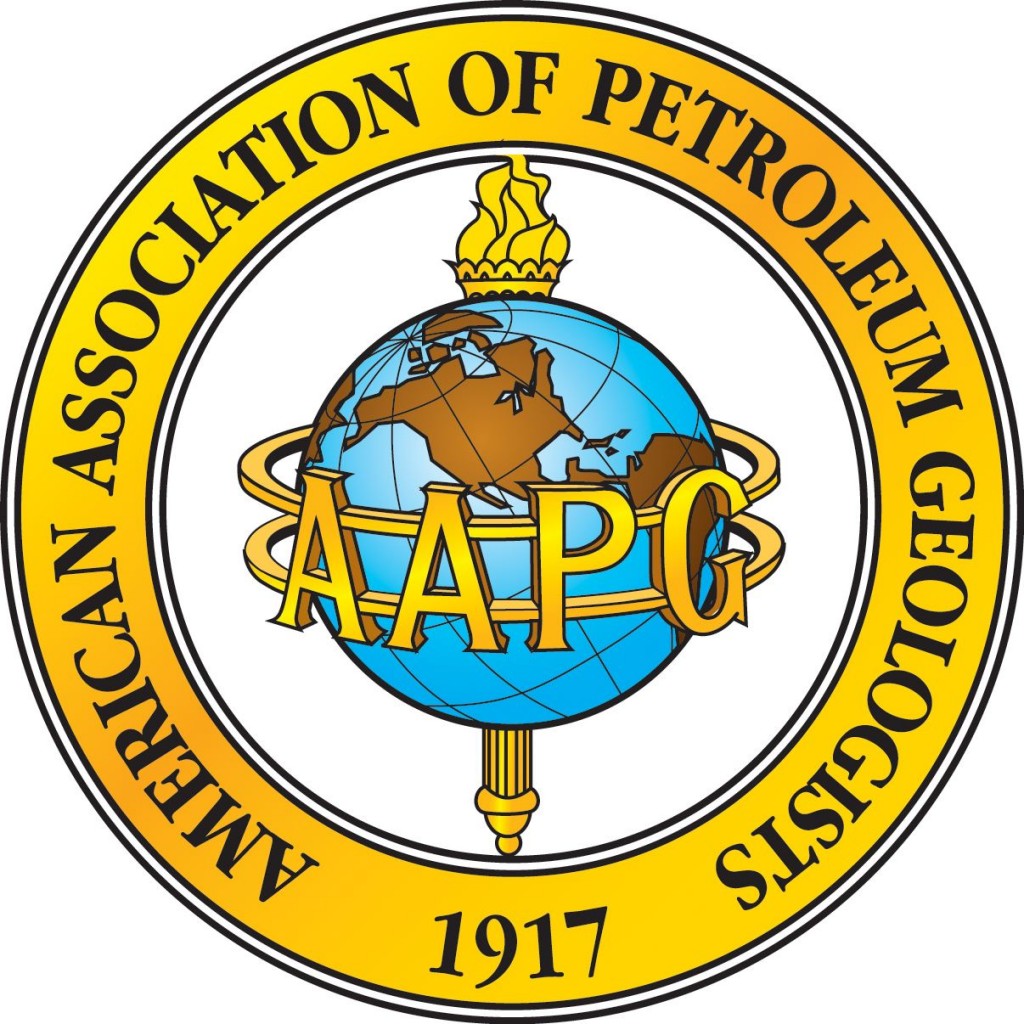
AAPG inspires professional conduct amongst its more than 30,000 members.
Increasing understanding and acceptance of petroleum geology as a valued tool in exploration led to the 1917 formation of the Southwestern Association of Petroleum Geologists, precursor to today’s American Association of Petroleum Geologists. Since then, AAPG has fostered scientific research, advanced the science of geology, and promoted new technologies.
Father of American Geology
Born in Ayr, Scotland, William Maclure (1863-1840) created the earliest geological maps of North America, becoming a renowned American geologist and “stratigrapher.” Many geologists consider Maclure the Father of American Geology.
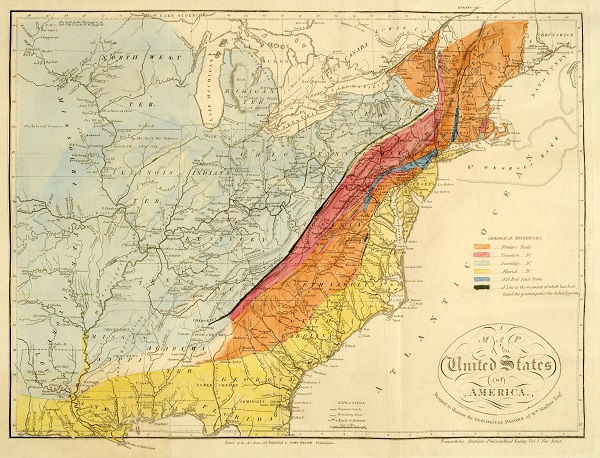
“Map of the United States of America, Designed to Illustrate the Geological Memoir of Wm. Maclure, Esqr.” This 1818 version is more detailed than the first geological map he published in 1809. Image courtesy the Historic Maps Collection, Princeton Library.
Maclure settled in the United States in 1797, and by 1808 he had traveled from Maine to Georgia to produce the first U.S. geological map, published in the Transactions of the American Philosophical Society. “Here, in broad strokes, he identifies six different geological classes,” a Princeton geologist later reported. “Note that the chain of the Appalachian Mountains is correctly labeled as containing the most primitive, or oldest, rock.”
When Yale chemist Benjamin Silliman organized the American Geological Society in 1819, Maclure was elected its first president. In the 1850s, Silliman’s son, also a Yale chemist, analyzed samples of Pennsylvania “rock oil” for refining into kerosene. His report led to drilling America’s first oil well in 1859.
Father of Petroleum Engineering
John Franklin Carll, a geologist born in Bushwick, New York, on May 7, 1828, could be considered the world’s first petroleum engineer. He developed many of the exploration and production industry’s geological methods — and helped pioneering oil driller Lyne Taliaferro Barret drill the first Texas oil well.

“In 1875, Carll published strip logs from nine Pennsylvania wells, and he used them for correlation purposes in much the same manner as they are employed today,” noted the Society of Petroleum Engineers (SPE). “His work also confirmed the theory that oil sands lie in lens-shaped masses, not in continuous belts, and that oil does not occur in underground pools or lakes, but in pores of sandstone.”
“More than a century ago, he expressed the principles of petroleum engineering and geology that established much of the framework for the development of petroleum engineering technology,” proclaimed SPE, which established the John Franklin Carll Award in 1958.
The earth sciences of petroleum geology and engineering have come a long way since pioneering steps and stumbles in the Ohio River Valley and Pennsylvania’s early oilfields. Modern geologists grapple with vast amounts of data and technological innovations in pursuit of petroleum.
_______________________
Recommended Reading: Trek of the Oil Finders: A History of Exploration for Petroleum (1975); The Birth of the Oil Industry (1936); Anomalies, Pioneering Women in Petroleum Geology, 1917-2017 (2017); The Natural Gas Industry in Appalachia (2005); Myth, Legend, Reality: Edwin Laurentine Drake and the Early Oil Industry
(2005); Myth, Legend, Reality: Edwin Laurentine Drake and the Early Oil Industry (2009). Your Amazon purchase benefits the American Oil & Gas Historical Society. As an Amazon Associate, AOGHS earns a commission from qualifying purchases.
(2009). Your Amazon purchase benefits the American Oil & Gas Historical Society. As an Amazon Associate, AOGHS earns a commission from qualifying purchases.
_______________________
The American Oil & Gas Historical Society preserves U.S. petroleum history. Become an annual AOGHS annual supporting member and help maintain this energy education website and expand historical research. For more information, contact bawells@aoghs.org. Copyright © 2022 Bruce A. Wells. All rights reserved.
Citation Information – Article Title: “Rocky Beginnings of Petroleum Geology.” Authors: B.W. Wells and K.L. Wells. Website Name: American Oil & Gas Historical Society. URL: https://aoghs.org/technology/petroleum-geologys-rocky-beginnings. Last Updated: October 24, 2022. Original Published Date: February 14, 2016.

(2009); The Prize: The Epic Quest for Oil, Money & Power (1991); The Birth of the Oil Industry (1936). Your Amazon purchase benefits the American Oil & Gas Historical Society. As an Amazon Associate, AOGHS earns a commission from qualifying purchases.











